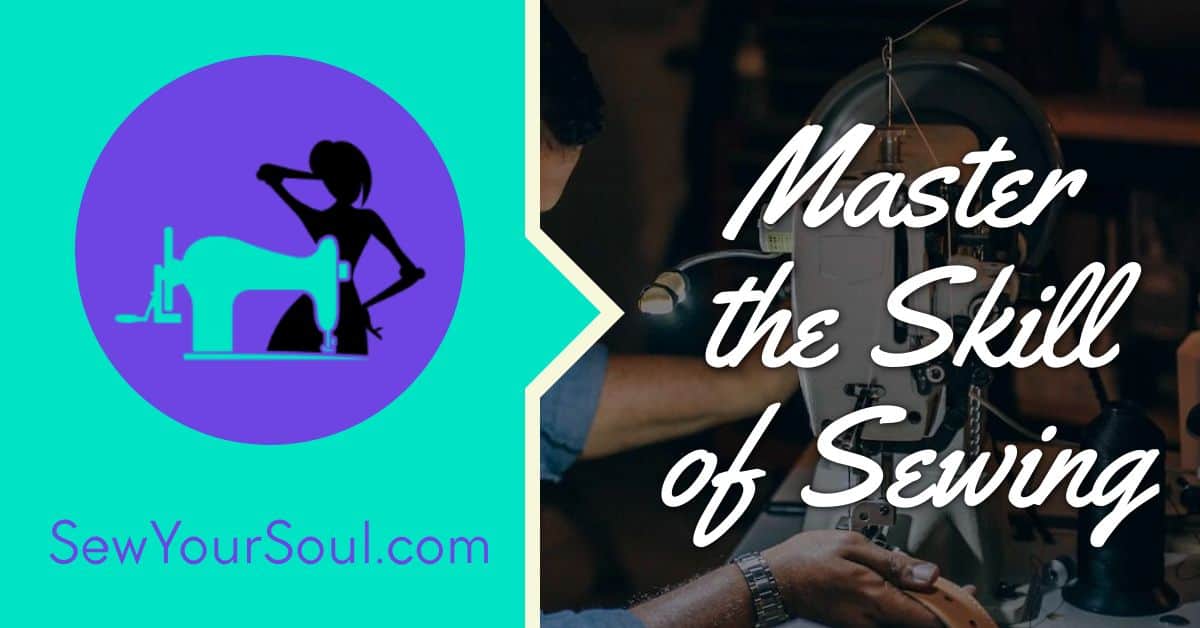As someone who loves quilting, I know how important it is to have the right tools to create beautiful and long-lasting quilts. One of the most important tools is a quilting machine. With so many different models available on the market, it can be overwhelming to choose the right one. In this article, I will share my knowledge and expertise to help you find the best quilting machine for your home use.
Understanding quilting machines can be challenging, especially if you are new to the craft. There are different types of quilting machines, such as mechanical and computerized, and they come with various features and functions. Some machines are suitable for beginners, while others are designed for professionals. In this article, I will explain the differences between these machines and their key features, so you can make an informed decision.
Now that you have a basic understanding of quilting machines, let’s dive into the top quilting machines for home use. I have researched and tested various machines to find the ones that offer the best value, quality, and performance. Whether you are a beginner or an experienced quilter, I am confident that you will find the perfect machine for your needs.
Understanding Quilting Machines
As someone who enjoys quilting, I know how important it is to have the right tools for the job. That’s why I wanted to take a moment to talk about quilting machines. If you’re new to quilting or just looking to upgrade your machine, it can be overwhelming to try and figure out what you need.
First things first, what is a quilting machine? A quilting machine is a type of sewing machine that is specifically designed for quilting. While you can certainly quilt on a standard sewing machine, a quilting machine will make the process much easier and faster. Quilting machines typically have a larger throat space, which means you can fit larger pieces of fabric under the needle. This is important when you’re working on a larger quilt.
When it comes to choosing a quilting machine, there are a few things to consider. One of the most important is the type of quilting you plan on doing. If you’re just starting out and plan on doing mostly straight-line quilting, a basic quilting machine will likely suffice. However, if you plan on doing more intricate free-motion quilting, you’ll want a machine with more advanced features.
Another thing to consider is the size of the machine. Quilting machines can be quite large, so you’ll want to make sure you have enough space in your sewing room to accommodate it. You’ll also want to consider the weight of the machine, as some can be quite heavy and difficult to move around.
Finally, you’ll want to consider your budget. Quilting machines can range from a few hundred dollars to several thousand dollars. While it’s certainly possible to find a good machine on the lower end of that range, keep in mind that you get what you pay for. A more expensive machine will likely have more features and be more durable in the long run.
Overall, a quilting machine can be a great investment for anyone who enjoys quilting. Just make sure you do your research and choose the machine that’s right for you and your needs.
Top Quilting Machines for Home Use
As someone who loves to quilt, I know how important it is to have a reliable and efficient quilting machine. After researching and testing various models, I have compiled a list of the top quilting machines for home use.
Brother PQ1500SL
The Brother PQ1500SL is a great option for those who want a high-speed machine that can handle heavy fabrics. It has a maximum sewing speed of 1,500 stitches per minute and a large extension table for quilting. The machine also comes with a knee lifter and automatic needle threader for added convenience.
Juki TL-2000Qi
The Juki TL-2000Qi is a sturdy and reliable machine that is perfect for quilting. It has a large work area and a maximum sewing speed of 1,500 stitches per minute. The machine also comes with a knee lifter and automatic needle threader for ease of use.
Brother HC1850
The Brother HC1850 is an affordable and versatile machine that can handle both quilting and regular sewing projects. It has 130 built-in stitches and comes with a wide table for quilting. The machine also has a drop-in bobbin system and automatic needle threader for easy setup.
Brother XR3774
The Brother XR3774 is a beginner-friendly machine that is perfect for those who are just starting to quilt. It has 37 built-in stitches and comes with a wide table for quilting. The machine also has a one-step buttonhole feature and automatic needle threader for easy setup.

Juki TL-2010Q
The Juki TL-2010Q is a high-end machine that is perfect for serious quilters. It has a maximum sewing speed of 1,500 stitches per minute and comes with a large extension table for quilting. The machine also has a knee lifter and automatic needle threader for added convenience.
Brother CS7000X
The Brother CS7000X is a versatile machine that can handle both quilting and regular sewing projects. It has 70 built-in stitches and comes with a wide table for quilting. The machine also has a drop-in bobbin system and automatic needle threader for easy setup.
Brother XR9550
The Brother XR9550 is a great option for those who want a machine that can handle both quilting and embroidery. It has 165 built-in stitches and comes with a wide table for quilting. The machine also has a drop-in bobbin system and automatic needle threader for easy setup.
Juki HZL-F600 Computerized
The Juki HZL-F600 Computerized is a high-tech machine that is perfect for those who want precision and efficiency. It has 255 built-in stitches and comes with a wide table for quilting. The machine also has a knee lifter and automatic needle threader for added convenience.
Singer 9960
The Singer 9960 is a versatile machine that can handle both quilting and regular sewing projects. It has 600 built-in stitches and comes with a wide table for quilting. The machine also has a drop-in bobbin system and automatic needle threader for easy setup.
Janome MC6650
« How to Sew a Face Mask: A Step-by-Step Guide with Pictures
Best Folding Sewing Machine Tables for Easy Storage and Convenience »
The Janome MC6650 is a high-end machine that is perfect for serious quilters. It has a maximum sewing speed of 1,000 stitches per minute and comes with a large extension table for quilting. The machine also has a knee lifter and automatic needle threader for added convenience.
Overall, these quilting machines are some of the best options for home use. Whether you are a beginner or a seasoned quilter, there is a machine on this list that will meet your needs.
Quilting Machines for Beginners
As a beginner quilter, it can be overwhelming to choose the right quilting machine. You want a machine that is easy to use, affordable, and can handle the basic quilting tasks. Here are some of the best quilting machines for beginners that I recommend:
Brother XR3774 Sewing and Quilting Machine
The Brother XR3774 Sewing and Quilting Machine is an excellent choice for beginners. It is easy to use, has a wide range of features, and is affordable. This machine comes with 37 built-in stitches, including a one-step buttonhole, and an easy-to-use needle threader. It also has a large table for quilting and a free arm for sewing cuffs and sleeves.
Singer Start 1304 Sewing Machine
The Singer Start 1304 Sewing Machine is another great option for beginners. It is lightweight, compact, and easy to use. This machine comes with six built-in stitches, including a four-step buttonhole, and an automatic bobbin winding system. It also has a free arm for sewing cuffs and sleeves.
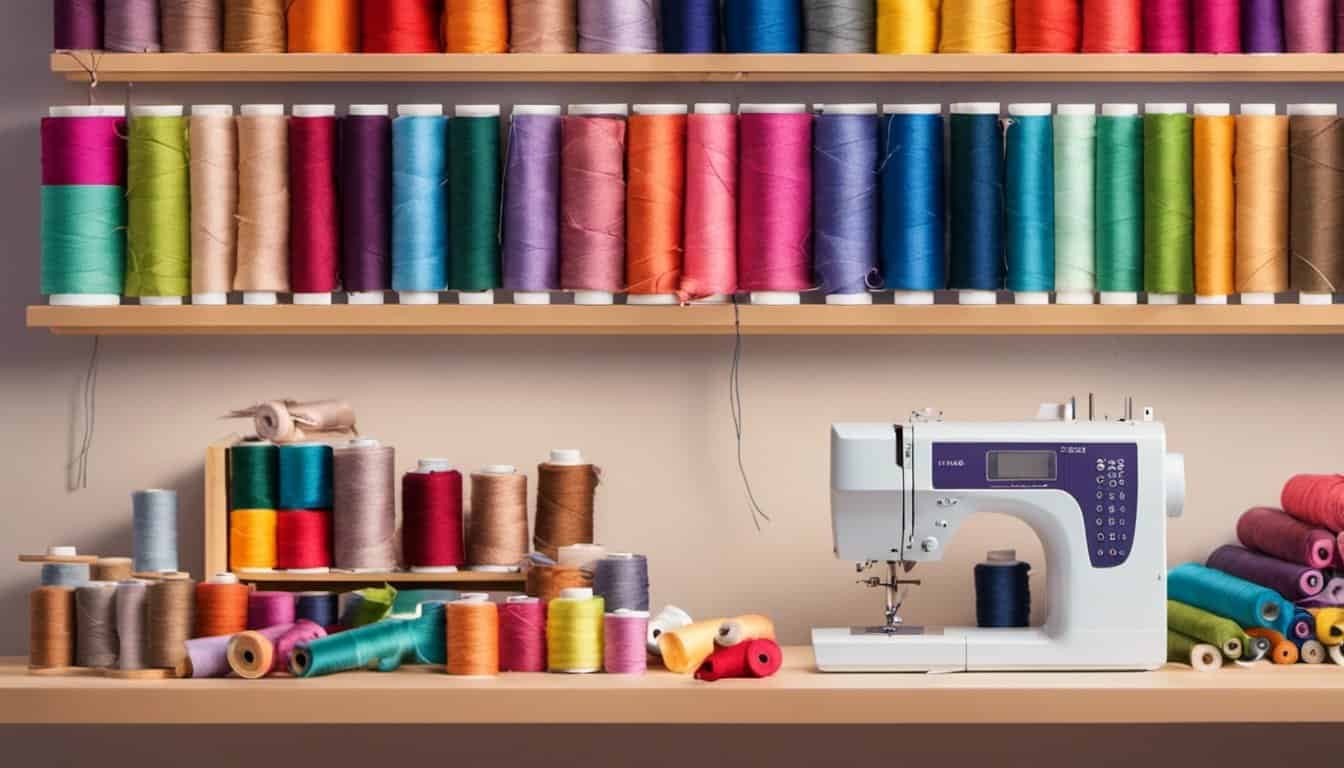
Janome 2212 Sewing Machine
The Janome 2212 Sewing Machine is a durable and reliable machine that is perfect for beginners. It is easy to use and has 12 built-in stitches, including a four-step buttonhole. This machine also has a drop feed for free motion quilting and a snap-on presser foot system.
Brother CS6000i Sewing and Quilting Machine
The Brother CS6000i Sewing and Quilting Machine is a versatile machine that is perfect for beginners. It has 60 built-in stitches, including a one-step buttonhole, and an easy-to-use LCD display screen. This machine also comes with an oversized table for quilting and a free arm for sewing cuffs and sleeves.
Ease of Use
When choosing a quilting machine for beginners, ease of use is an important factor to consider. Look for machines with simple controls and clear instructions. Also, consider the weight and size of the machine, as well as the ease of threading and changing the needle.
Overall, these quilting machines are perfect for beginners who are just starting out. They are affordable, easy to use, and can handle basic quilting tasks. With one of these machines, you can start creating beautiful quilts in no time!
Computerized vs Mechanical Quilting Machines
When it comes to choosing a quilting machine, one of the main decisions you’ll have to make is whether to go for a computerized or mechanical machine. Both types of machines have their pros and cons, so it’s important to weigh up your options before making a decision.
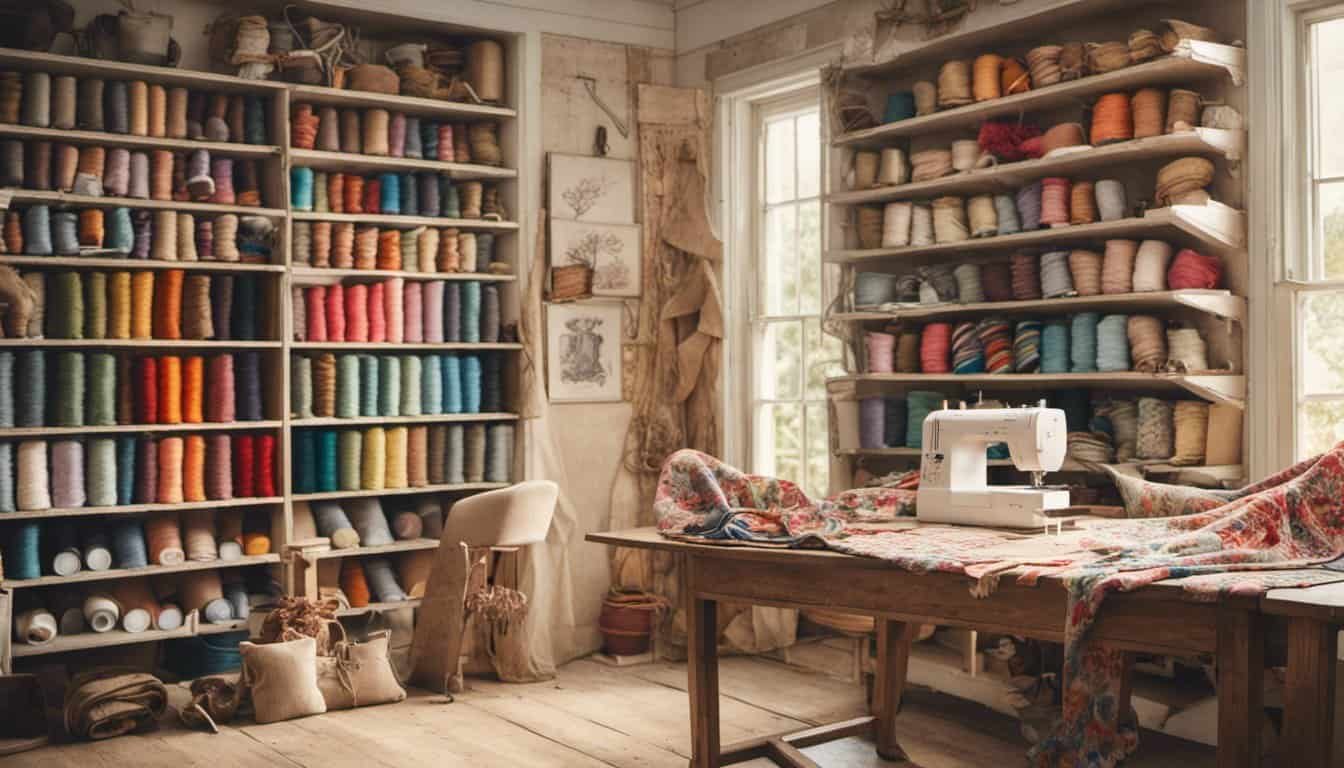
Mechanical Machines
Mechanical sewing machines are the traditional type of machine that have been around for decades. They are powered by a foot pedal and use a series of gears, cams, and levers to control the stitching. One of the main benefits of mechanical machines is that they are generally more affordable than computerized machines. They are also simple to use and require less maintenance than computerized machines.
However, mechanical machines do have their limitations. They are not as versatile as computerized machines, and they can be more difficult to use for intricate designs. They also don’t have built-in computers, which means you’ll have to rely on your own skills and knowledge to get the best results.
Computerized Machines
Computerized quilting machines, on the other hand, are a more modern option that have become increasingly popular in recent years. They are powered by electricity and have built-in computers that control the stitching. This means that they are much more versatile than mechanical machines, and can be used for a wide range of designs and patterns.
One of the main benefits of computerized machines is that they are much easier to use than mechanical machines. They have a range of features and settings that can be adjusted at the touch of a button, which makes them ideal for beginners. They are also more accurate than mechanical machines, which means you’ll get a better finish on your quilting.
However, computerized machines do have their downsides. They are generally more expensive than mechanical machines, and they require more maintenance. They also rely on built-in computers, which means that if something goes wrong with the computer, the machine may not work properly.
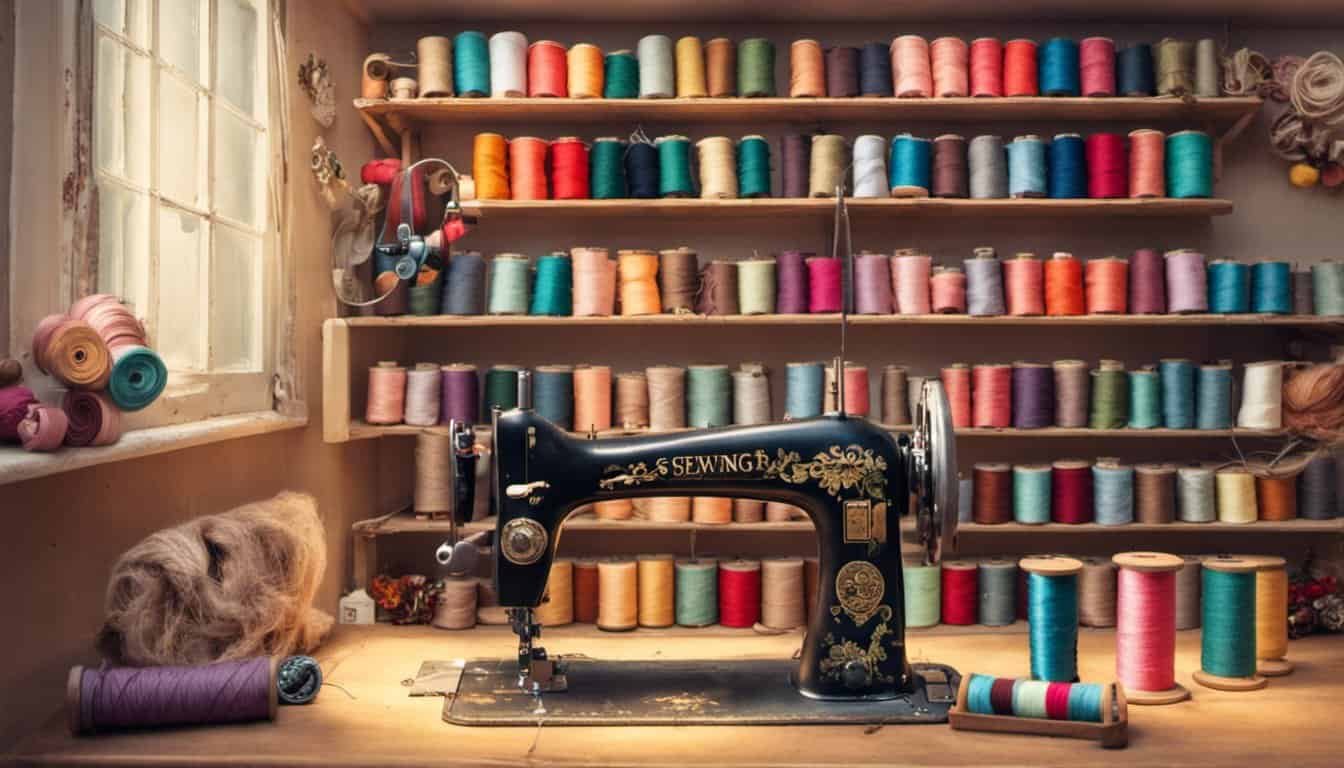
In conclusion, when it comes to choosing between a computerized or mechanical quilting machine, it really comes down to personal preference. If you’re looking for a machine that is simple to use and requires less maintenance, a mechanical machine might be the best option for you. However, if you want a machine that is more versatile and accurate, a computerized machine might be the way to go.
Key Features of Quilting Machines
When it comes to quilting machines, there are several key features that are important to consider. As someone who loves to quilt, I’ve spent a lot of time researching and testing different machines, and I’ve found that the following features are essential for a great quilting experience:
Built-in Stitches
One of the most important features of a quilting machine is the number and variety of built-in stitches. Look for a machine that offers a wide range of stitches, including both straight and decorative options. This will allow you to create a variety of different designs and patterns.
Extension Table
An extension table is another important feature to consider. This is a large table that attaches to the machine and provides extra space for your fabric as you work. This is especially important when working on larger quilts, as it can be difficult to maneuver the fabric without enough space.
Walking Foot
A walking foot is a specialized presser foot that helps to feed multiple layers of fabric through the machine evenly. This is essential for quilting, as it ensures that all layers of the quilt are sewn together smoothly and without puckering.

Free Motion Quilting
Free motion quilting is a technique where you move the fabric freely under the needle to create intricate designs and patterns. Look for a machine that offers this feature, as it can add a lot of creativity and versatility to your quilting projects.
Automatic Thread Cutter
An automatic thread cutter is a convenient feature that allows you to quickly and easily cut your threads without having to use scissors. This can save a lot of time and make your quilting process more efficient.
Large Throat Space
Finally, a large throat space is important for quilting, as it provides enough room to maneuver the fabric and create larger designs. Look for a machine with a throat space of at least 9 inches or more.
Overall, these are the key features that I recommend looking for when shopping for a quilting machine. Of course, there are many other features and options to consider as well, but these are the ones that I have found to be most essential for a great quilting experience.
Quilting Projects and Techniques
I love quilting because it allows me to express my creativity and make something beautiful and functional at the same time. There are so many different quilting projects and techniques to try, so I never get bored.

One of my favorite quilting techniques is free-motion sewing. This technique allows me to create intricate designs and patterns by moving the fabric freely under the needle. It takes some practice to get the hang of it, but once you do, the possibilities are endless.
Another technique that I enjoy is applique. This involves sewing a smaller piece of fabric onto a larger piece to create a design or pattern. It’s a great way to add some color and texture to your quilt.
When it comes to quilting projects, there are so many options to choose from. I love making quilts for my family and friends as gifts. It’s a thoughtful and personal way to show them how much I care.
I also enjoy making quilts for specific purposes, such as baby quilts or holiday-themed quilts. These projects allow me to get creative and have fun with different colors and patterns.
Overall, quilting is a fun and rewarding hobby that allows me to express my creativity and make something beautiful. Whether you’re a beginner or an experienced quilter, there’s always something new to learn and try.

Materials and Quilting
When it comes to quilting, the materials you use can make a big difference in the final product. I’ve found that certain fabrics and batting work better than others, depending on the project.
Thick fabrics, like denim and leather, can be a bit tricky to work with. I’ve found that using a quilting machine with a powerful motor and adjustable presser foot pressure can help. It’s also important to use the right needle – a heavy-duty needle designed for denim or leather can make a big difference.
Batting is another important material to consider. There are many different types of batting available, from cotton to wool to polyester. I prefer to use a cotton or cotton-blend batting for most of my projects, as it’s breathable and easy to work with. However, if you’re making a quilt that will be used as a bedspread or in a cold climate, a wool or polyester batting might be a better choice.
When it comes to hems and sleeves, I’ve found that a quilting machine with a free arm can be a real lifesaver. This feature allows you to easily maneuver the fabric and create a professional-looking hem or sleeve.
Overall, the key to successful quilting is to experiment with different materials and techniques until you find what works best for you. Don’t be afraid to try new things and make mistakes – that’s how you learn and grow as a quilter!
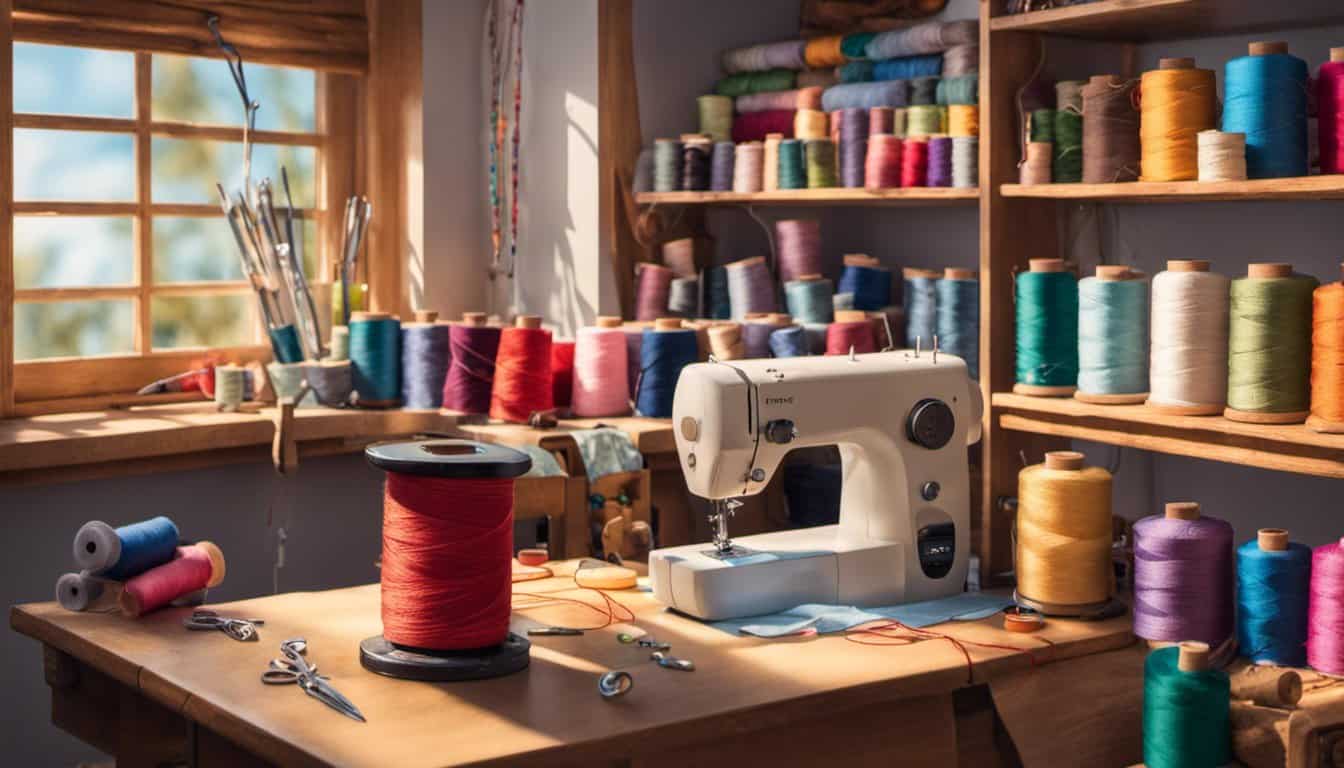
Accessories for Quilting
As a quilter, I know that having the right accessories can make all the difference in the world. Here are some of my favorite quilting accessories that I use to make my quilting projects easier and more enjoyable.
Accessory Kit
If you’re just starting out with quilting, I highly recommend getting an accessory kit for your sewing machine. These kits typically include a variety of feet and attachments that are specifically designed for quilting. Some of the most useful accessories in these kits include:
- Walking foot: This foot helps to feed multiple layers of fabric evenly through the machine, making it ideal for quilting.
- Free-motion foot: This foot allows you to move the fabric in any direction while sewing, making it perfect for free-motion quilting.
- 1/4-inch foot: This foot has a guide that helps you sew a consistent 1/4-inch seam, which is essential for piecing quilt blocks.
- Quilting guide: This attachment helps you sew straight lines of quilting, which is essential for creating a professional-looking quilt.
Other Accessories
In addition to an accessory kit, there are a few other accessories that I find helpful when quilting. These include:
- Rotary cutter and mat: A rotary cutter and mat make it easy to cut multiple layers of fabric quickly and accurately.
- Quilting rulers: Quilting rulers come in a variety of shapes and sizes and are used to measure and cut fabric pieces for quilting.
- Seam ripper: Let’s face it, mistakes happen. A good seam ripper is essential for fixing mistakes and making adjustments to your quilt.
- Thread snips: These small scissors are perfect for trimming threads as you sew.
Having the right accessories can make quilting more enjoyable and help you create beautiful, professional-looking quilts. Whether you’re just starting out or you’re an experienced quilter, investing in the right accessories is definitely worth it.
Choosing a Quilting Machine Based on Budget
When it comes to buying a quilting machine for home use, budget is a major consideration. Fortunately, there are many affordable options available that can still deliver excellent performance.

If you’re on a tight budget, consider the Brother XR3774. This machine is perfect for beginners and offers a range of features that make quilting easier, such as an automatic needle threader and drop-in bobbin system. It’s also lightweight and portable, making it easy to move around your home or take to quilting classes.
For those willing to spend a bit more, the Janome 2212 is a great option. It’s a heavy-duty sewing machine that can handle thick fabrics and multiple layers, making it ideal for quilting. It also has a range of stitch options and adjustable stitch length and width, allowing you to customize your quilting projects.
If you’re looking for a computerized quilting machine, the Brother HC1850 is a great choice. It offers a wide range of features, including 185 built-in stitches, an LCD screen, and a detachable wide table for larger projects. It’s also affordable, making it a great option for those on a budget who still want a high-quality machine.
Remember, when choosing a quilting machine based on budget, it’s important to consider your specific needs and preferences. Don’t be afraid to shop around and compare different models to find the one that’s right for you. With so many affordable options available, you’re sure to find a machine that fits your budget and delivers the performance you need for all your quilting projects.
Warranty and After Sales Service
When it comes to purchasing a quilting machine, the warranty and after-sales service are crucial factors to consider. A good warranty and reliable after-sales service can give you peace of mind and ensure that you are getting a quality product.

Most quilting machines come with a warranty that covers any defects in materials or workmanship. The length and terms of the warranty can vary from brand to brand and model to model. It is important to read the warranty carefully and understand what is covered and what is not. Some warranties may only cover parts, while others may cover both parts and labor.
In addition to the warranty, it is important to consider the after-sales service provided by the manufacturer. A good after-sales service can help you with any issues you may encounter with your quilting machine, from technical difficulties to general maintenance and repair. Look for a manufacturer that provides prompt and friendly customer service, as well as a comprehensive knowledge base or user manual.
When purchasing a quilting machine, I recommend looking for a manufacturer that offers a warranty of at least one year, although longer warranties are always better. Additionally, make sure that the manufacturer has a reliable after-sales service and provides easy access to customer support. A manufacturer with a good reputation for customer service can make all the difference when it comes to the overall satisfaction of your purchase.
Professional Quilting Machines
As a professional quilter, I know that having a specialized machine can make all the difference in the quality and speed of my stitching. That’s why I highly recommend investing in a professional quilting machine if you’re serious about your craft.
One of the key features of a professional quilting machine is its high-speed stitching capability. This allows you to complete your projects quickly and efficiently, without sacrificing quality. Look for machines with speeds of at least 1,000 stitches per minute (SPM) to ensure you can keep up with the demands of your work.
Another important factor to consider is throat size. A larger throat allows you to work with larger pieces of fabric and quilt more easily. Look for machines with a throat size of at least 9 inches to ensure you have enough space to work comfortably.
When it comes to specialized machines, long-arm quilting machines are a popular choice for professionals. These machines feature a large frame that holds the quilt in place, allowing you to move the machine head over the quilt to stitch in any direction. This makes it easier to work on larger quilts and achieve more intricate designs.
Overall, investing in a professional quilting machine is a smart choice for serious quilters. With its high-speed stitching and specialized features, you’ll be able to take your craft to the next level and create beautiful, high-quality quilts in no time.
Frequently Asked Questions
What is the best home quilting machine for a beginner?
As a beginner, you may want to start with a machine that is easy to use and has basic features. The Brother CS6000i Sewing and Quilting Machine is a great option for beginners. It is user-friendly, affordable, and has a wide range of features that make it perfect for quilting.
What is the best Brother sewing machine for quilting?
Brother has a wide range of sewing machines that are suitable for quilting. However, the Brother HC1850 Computerized Sewing and Quilting Machine is an excellent choice for quilters. It has a large LCD screen, a wide range of stitches, and is easy to use.
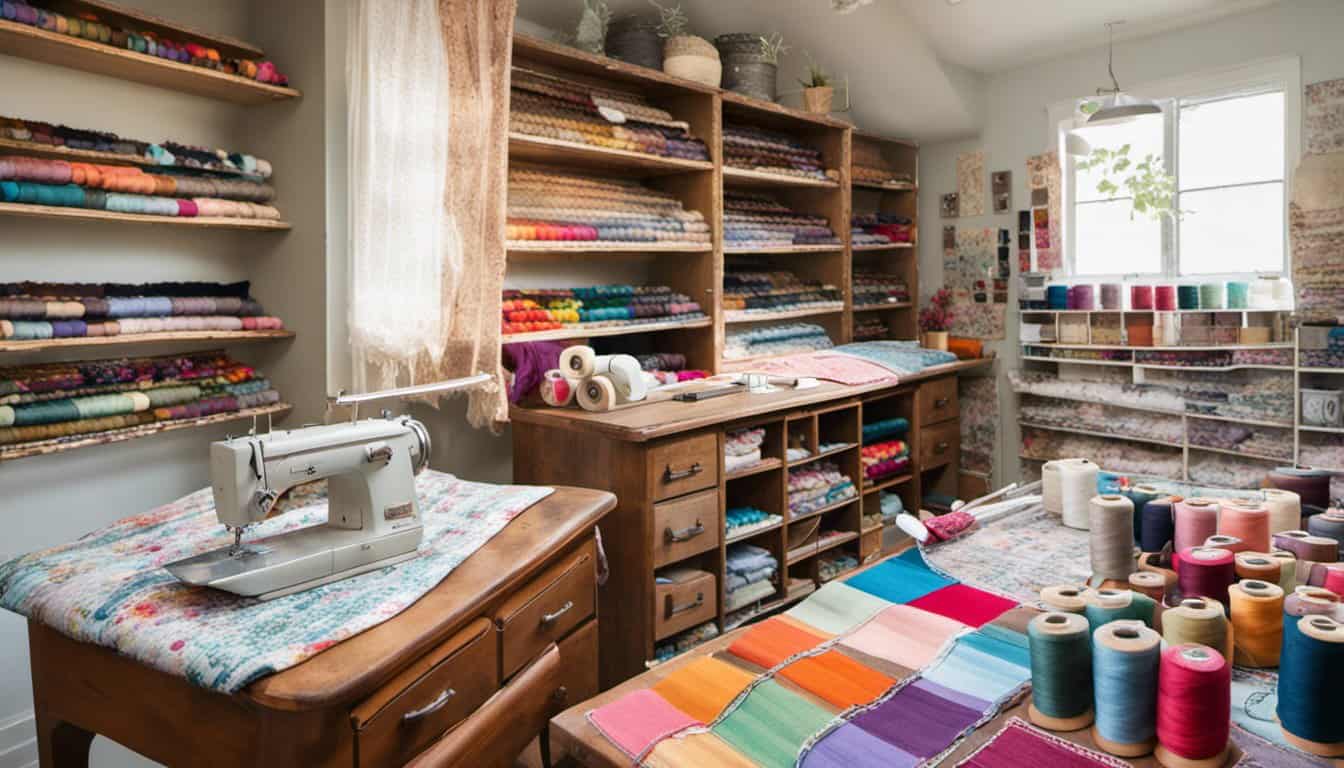
What is the best quilting machine under $1000?
If you are looking for a quilting machine under $1000, the Janome 4120QDC-B Computerized Sewing and Quilting Machine is a great option. It has a wide range of features, including 120 built-in stitches, a large LCD screen, and a variety of quilting accessories.
What machine do most quilters use?
There is no one-size-fits-all answer to this question, as each quilter has different preferences and needs. However, some of the most popular brands among quilters are Brother, Janome, and Juki.
How do I choose a quilting machine?
When choosing a quilting machine, there are several factors to consider. Some of the most important factors include the throat space, the number of stitches, the speed, and the ease of use. You should also consider your budget and the types of projects you will be working on.
What are the top features to look for in a quilting machine?
Some of the top features to look for in a quilting machine include a large throat space, a wide range of stitches, a high speed, and a variety of quilting accessories. Other features to consider include a large LCD screen, easy-to-use controls, and a durable construction.

